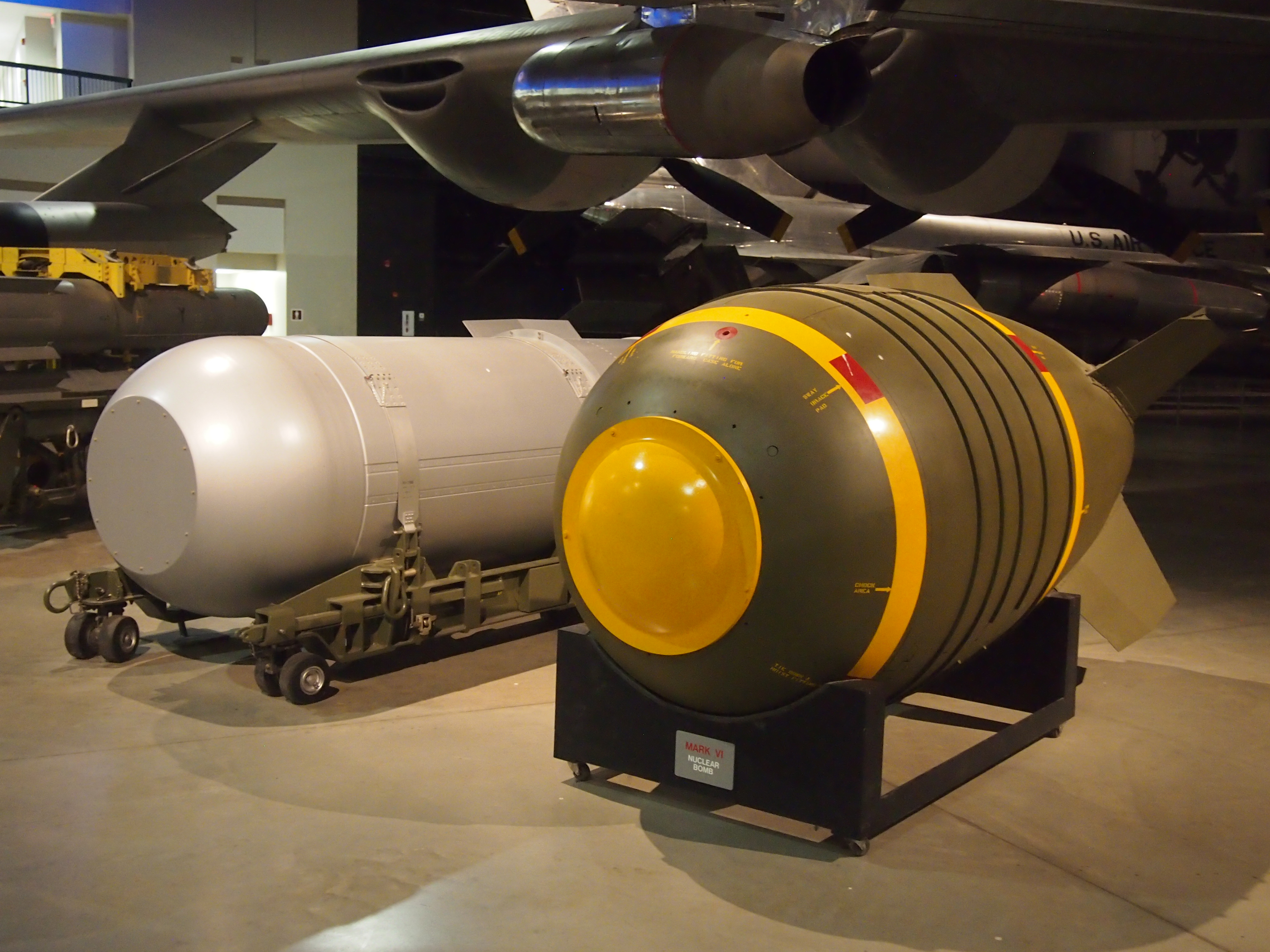As previously mentioned, models of Little Boy and Fat Man were nestled under one of the wings of the B-29 Bockscar at the National Museum of the U.S. Air Force near Dayton.
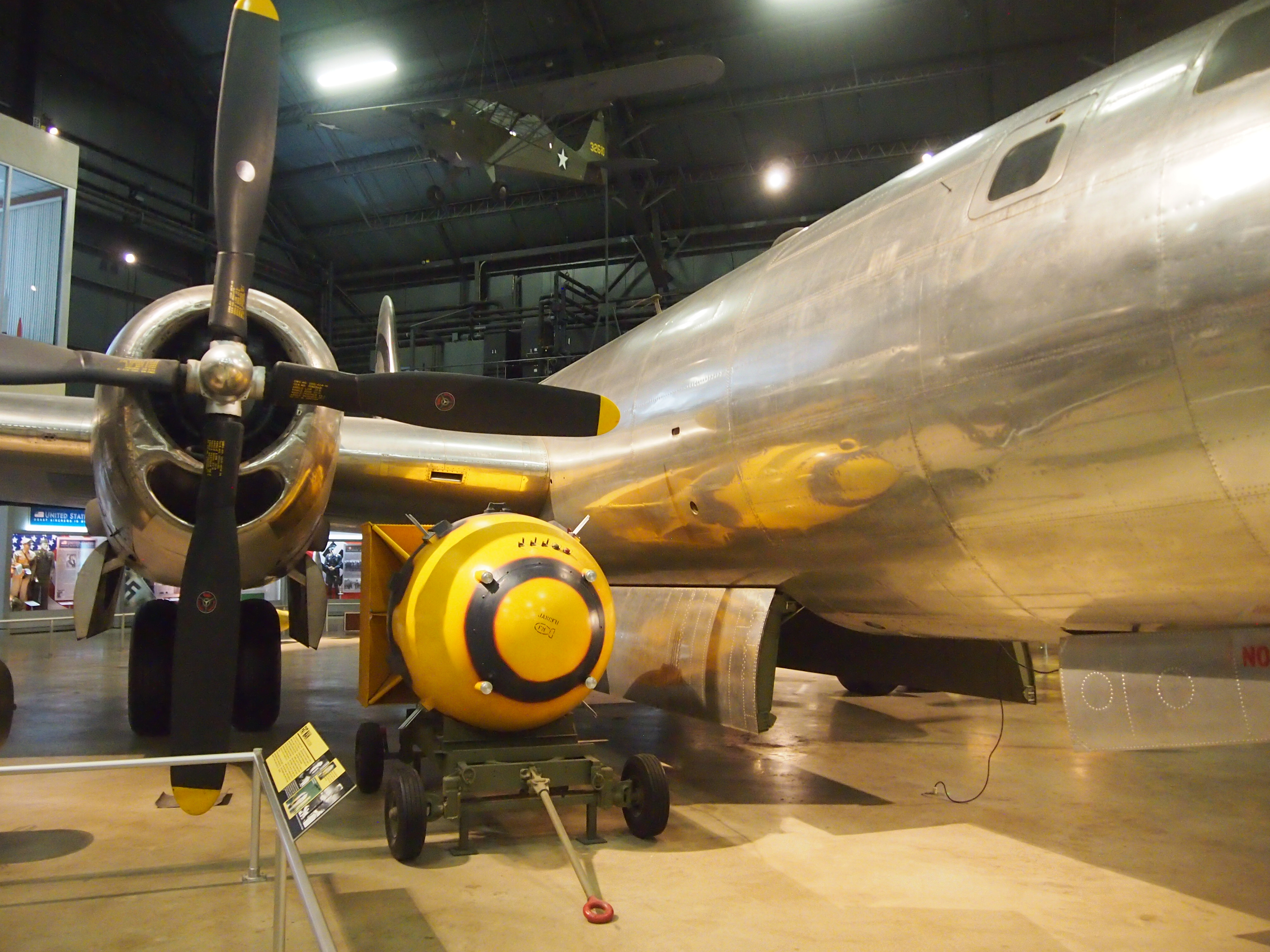
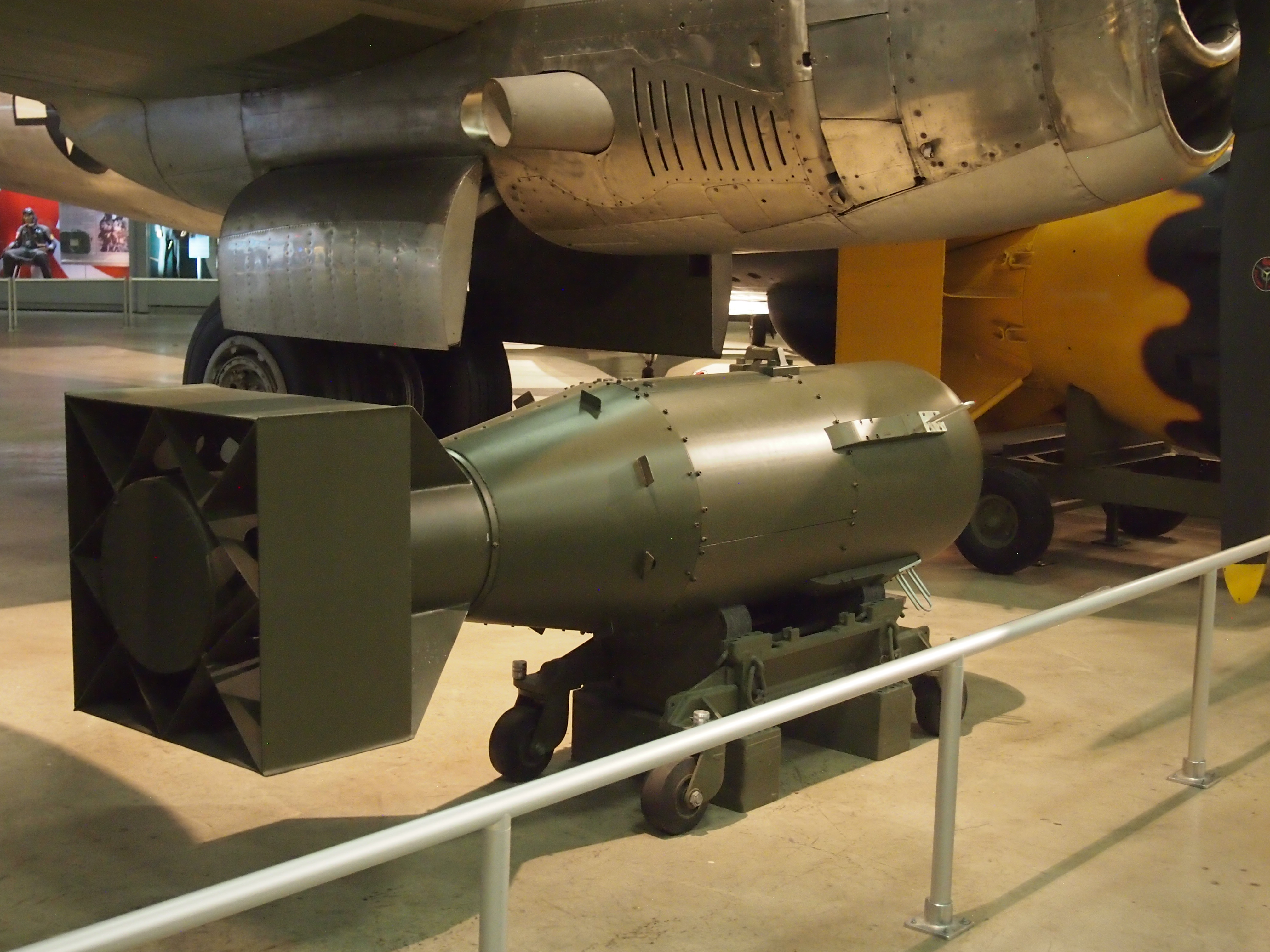 I guess Little Boy was there for the sake of comparison. I’ve known about the difference for the a long time. When I was young, maybe even in junior high, I picked up a paperback copy of The Rising Sun: The Decline and Fall of the Japanese Empire, 1936-1945 (1970), by John Toland, and read the chapter about Hiroshima and Nagasaki with considerable interest.
I guess Little Boy was there for the sake of comparison. I’ve known about the difference for the a long time. When I was young, maybe even in junior high, I picked up a paperback copy of The Rising Sun: The Decline and Fall of the Japanese Empire, 1936-1945 (1970), by John Toland, and read the chapter about Hiroshima and Nagasaki with considerable interest.
In the museum’s post-WWII galleries, I started noticing the nuclear weapons casings. Some of them were hard to miss, such as this Mark 41, with a helpful illustration behind it.
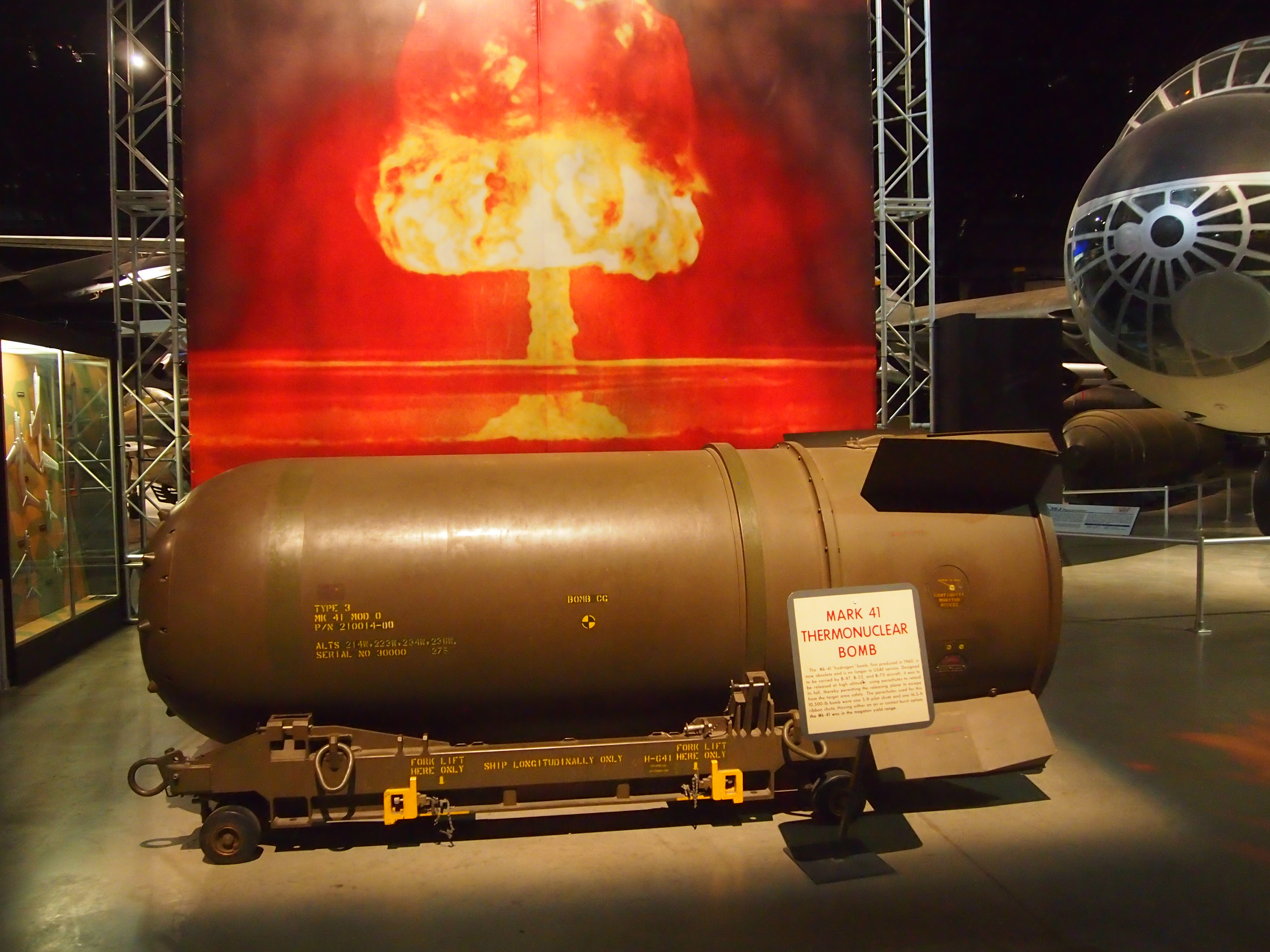 Designed to be carried by B-47s, B-52s, or B-70s, it was in the megaton range. Or about five times as powerful as Fat Man.
Designed to be carried by B-47s, B-52s, or B-70s, it was in the megaton range. Or about five times as powerful as Fat Man.
Most of the bomb casings were tucked away under the wings of some of the aircraft that carried them. Such as this sizable Mark 17.
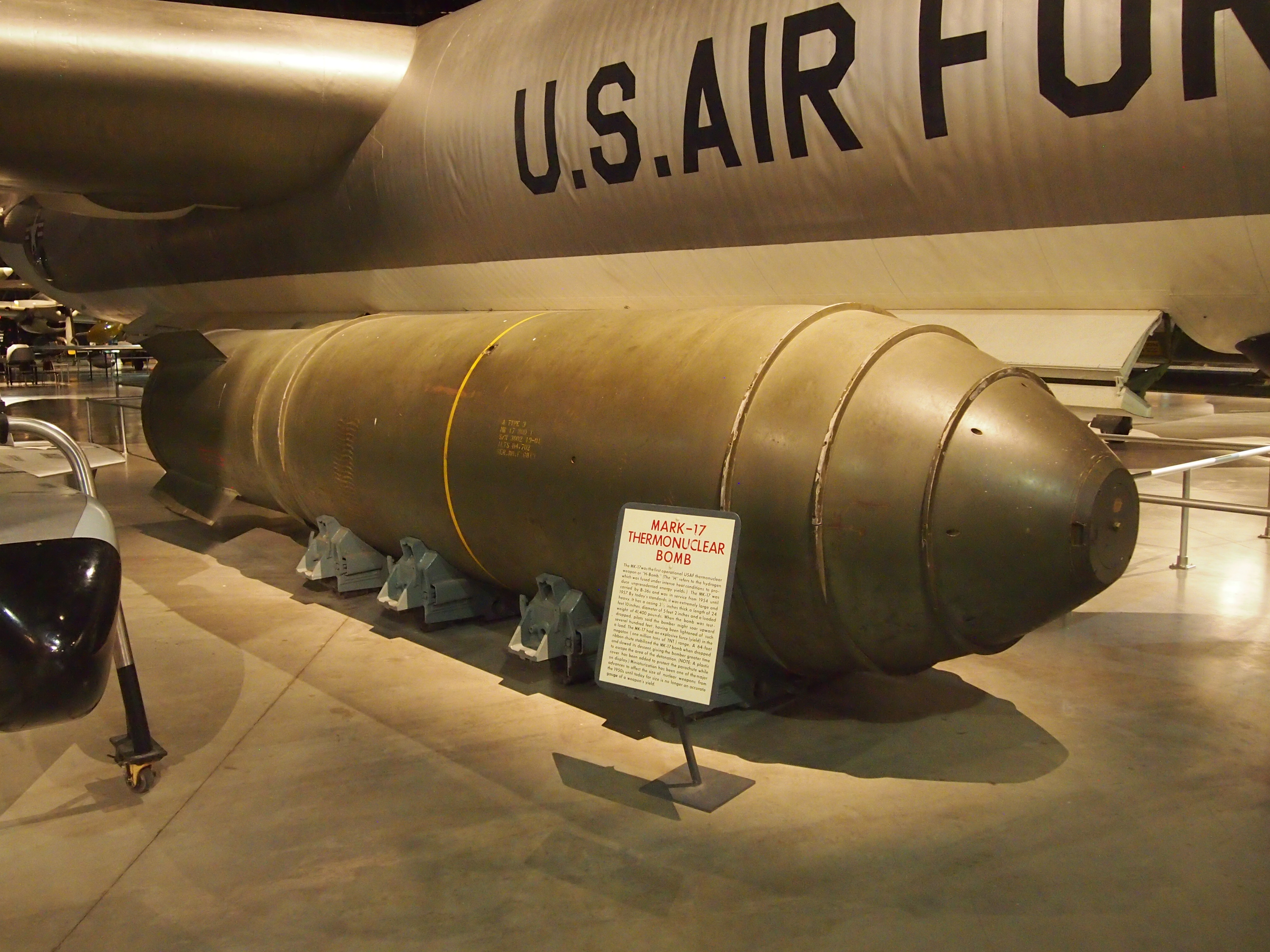 A Mark 6 on the right (not sure what the other one is).
A Mark 6 on the right (not sure what the other one is).
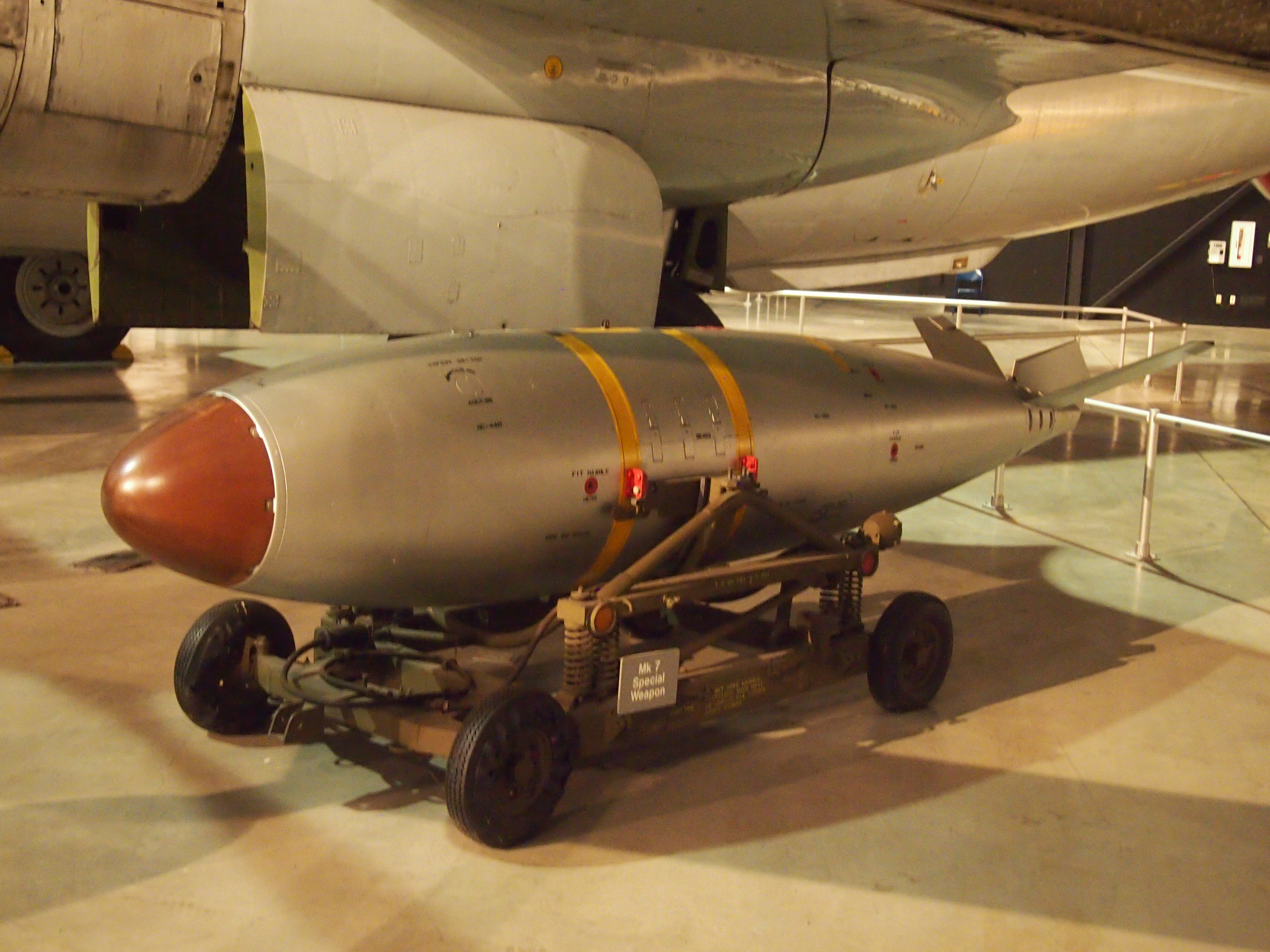 And some Mark 28s, also known as B28s.
And some Mark 28s, also known as B28s.
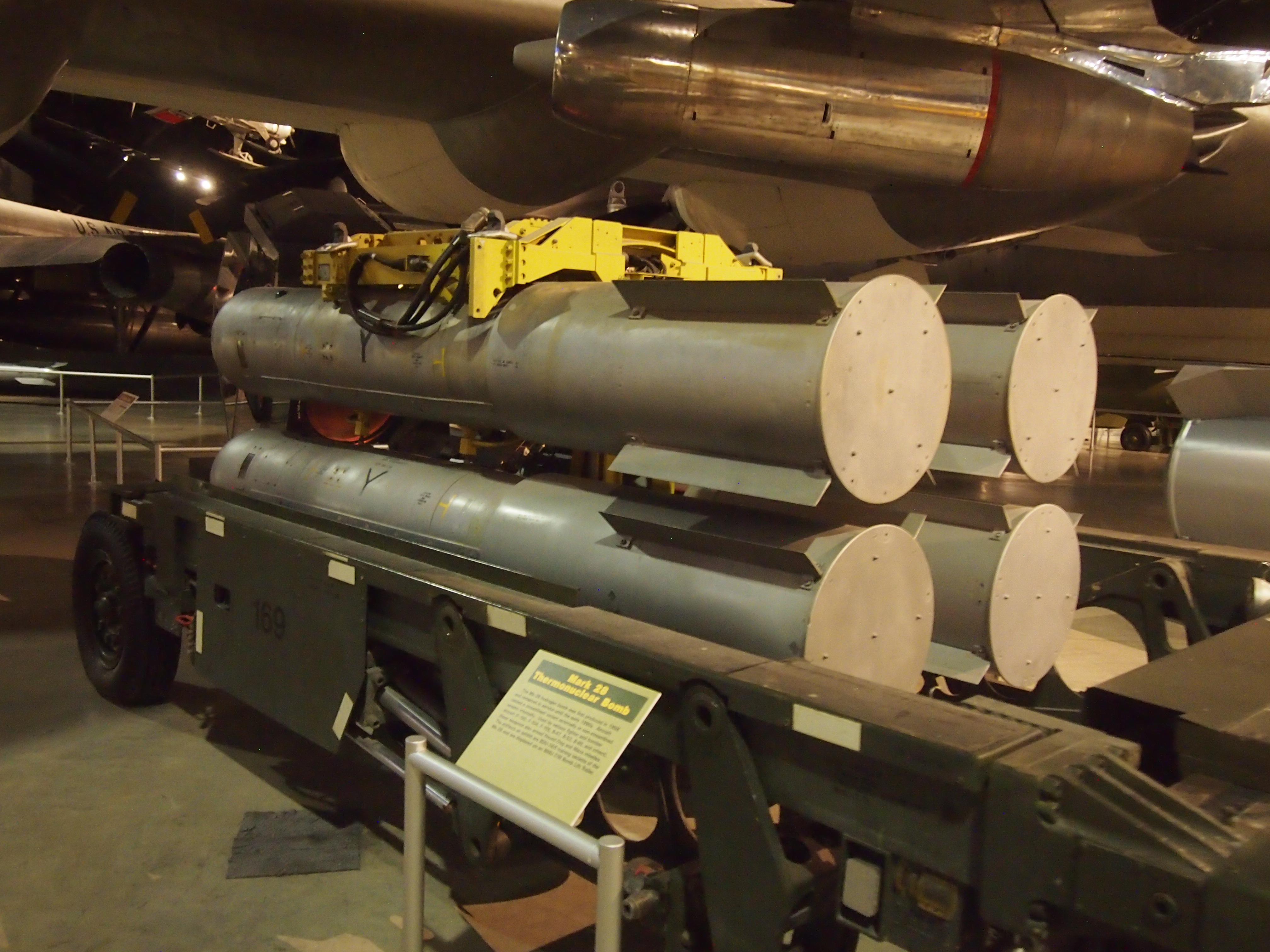 A cul-de-sac off of the Cold War gallery, a silo-like structure 140 feet high, houses the museum’s missile collection. It’s a dandy collection, too, with Jupiter, Minuteman, Thor, Atlas, Titan and Peacekeeper missiles.
A cul-de-sac off of the Cold War gallery, a silo-like structure 140 feet high, houses the museum’s missile collection. It’s a dandy collection, too, with Jupiter, Minuteman, Thor, Atlas, Titan and Peacekeeper missiles.
 Also included are more warhead casings, such as the W53, a version of B53 that the Titan II ICBM could carry. At nine megatons, it was a monster among monsters, now gone.
Also included are more warhead casings, such as the W53, a version of B53 that the Titan II ICBM could carry. At nine megatons, it was a monster among monsters, now gone.
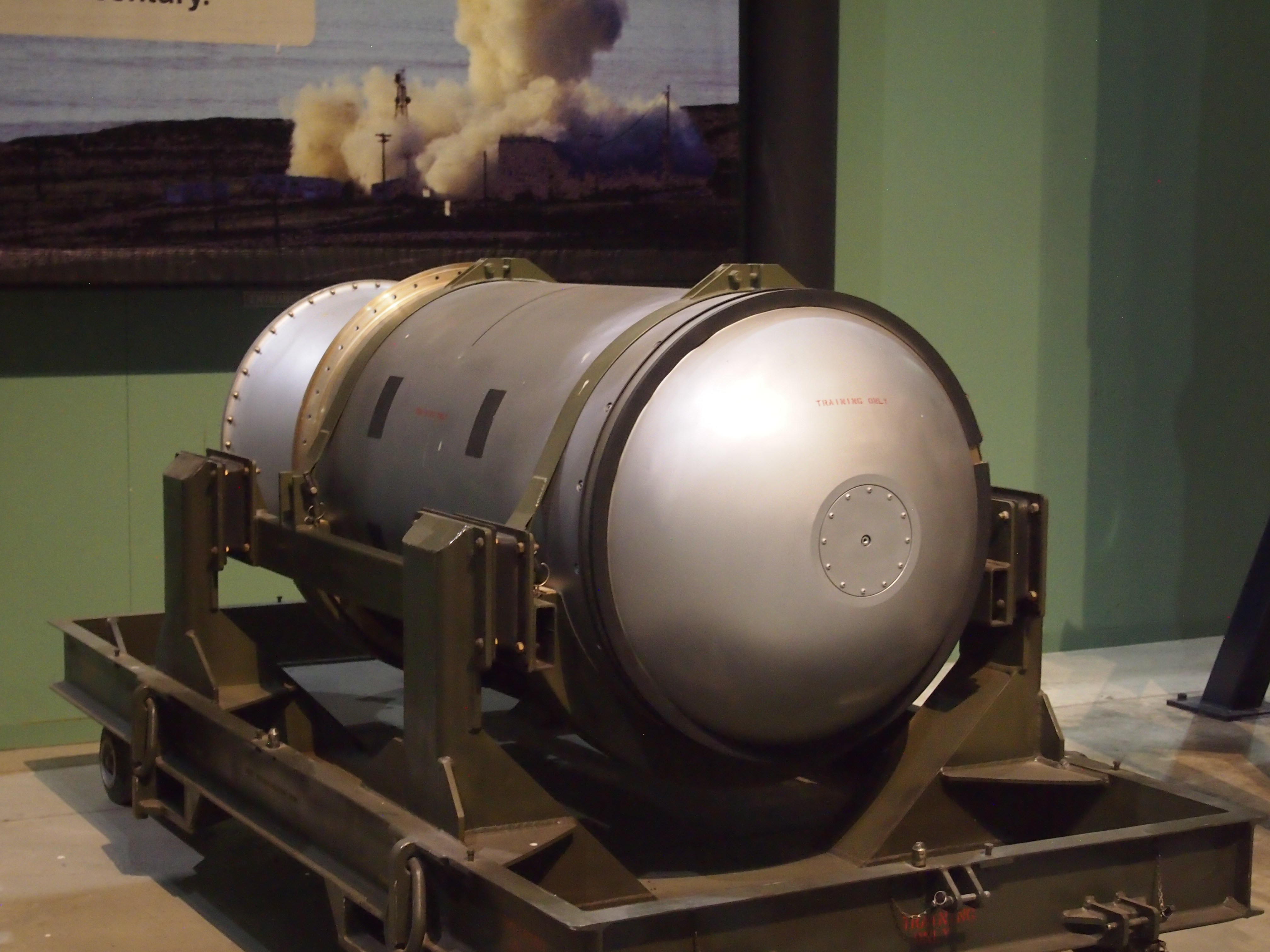 Remember MIRV? All the rage in arms control discussions in the 1970s and ’80s.
Remember MIRV? All the rage in arms control discussions in the 1970s and ’80s.
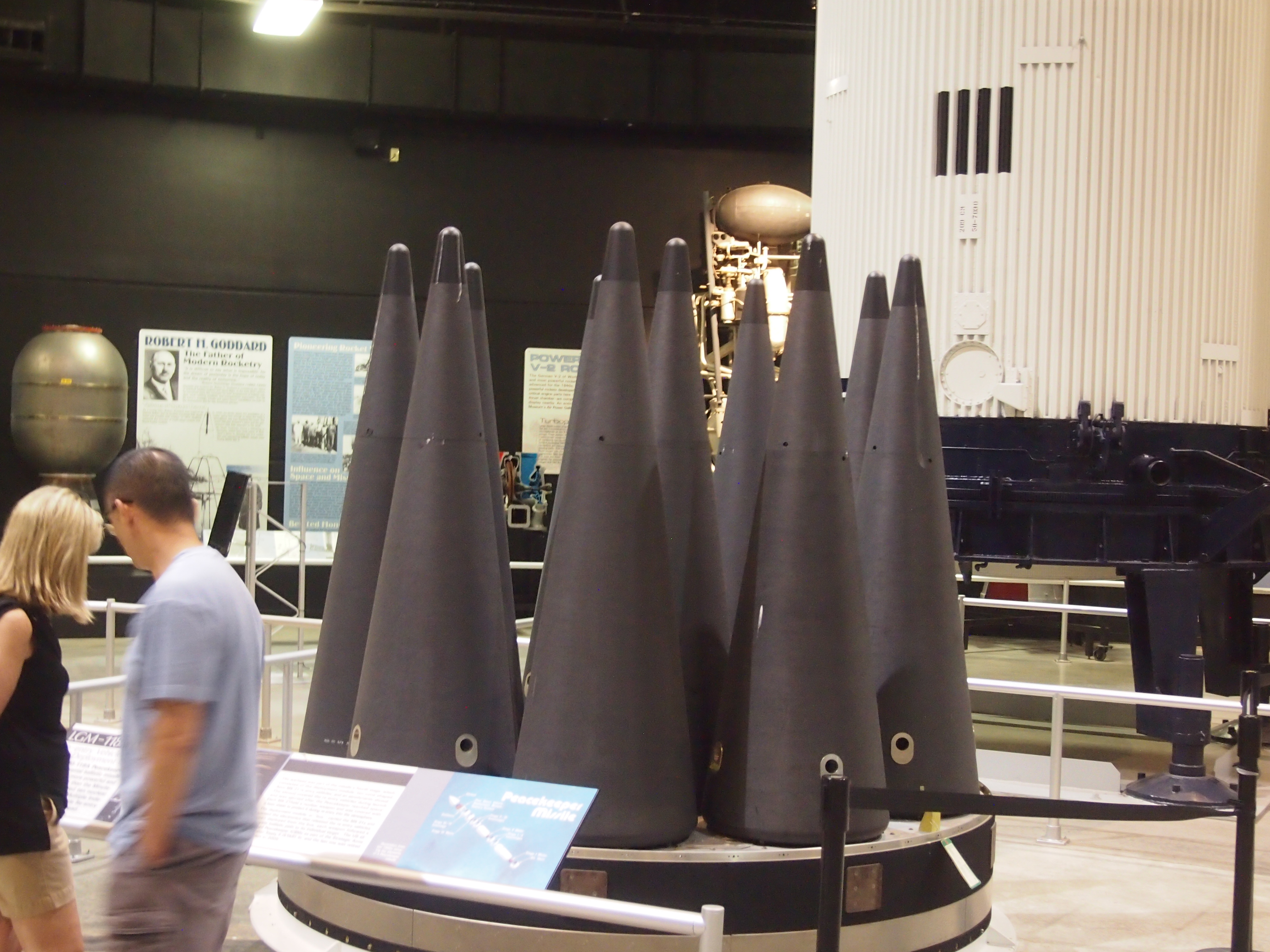 Ten warheads, count ’em, designed to be loaded on Peacekeeper missiles, all with different targets.
Ten warheads, count ’em, designed to be loaded on Peacekeeper missiles, all with different targets.
